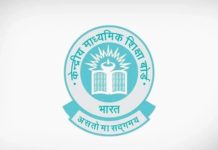Question: Name two important processes involved in the formation of a p-n junction diode. With the help of a circuit diagram. explain the working of the junction diode as a full wave rectifier. Draw its input and output waveforms. State the characteristic property of a junction code that makes it suitable for ratification.
The correct answer is –
The first part of the question has already been answered. Now, I will explain the working of a junction diode as a full-wave rectifier with the help of a circuit diagram and waveforms.
A full-wave rectifier circuit using a junction diode is shown below:

The AC input is applied across the junction diode, and the DC output is taken across the diode in the forward bias direction. During the positive half-cycle of the input waveform, the diode conducts and current flows through the load resistor in the forward direction, producing a positive half-cycle output waveform. During the negative half-cycle of the input waveform, the diode is reverse biased and does not conduct, resulting in zero output. Therefore, the output waveform is a rectified version of the input waveform, with both positive and negative half-cycles being converted to positive half-cycles.
The input and output waveforms of the full-wave rectifier circuit using a junction diode are shown below:


